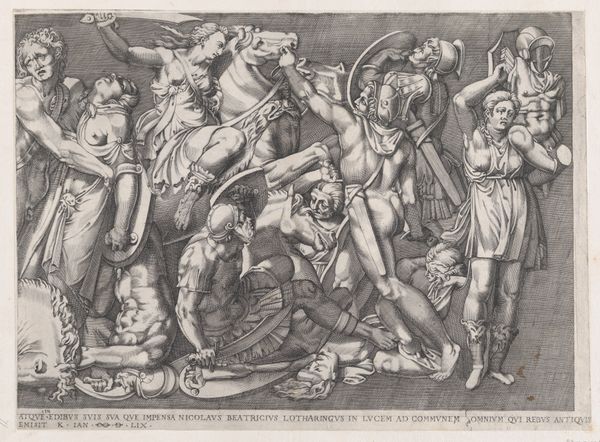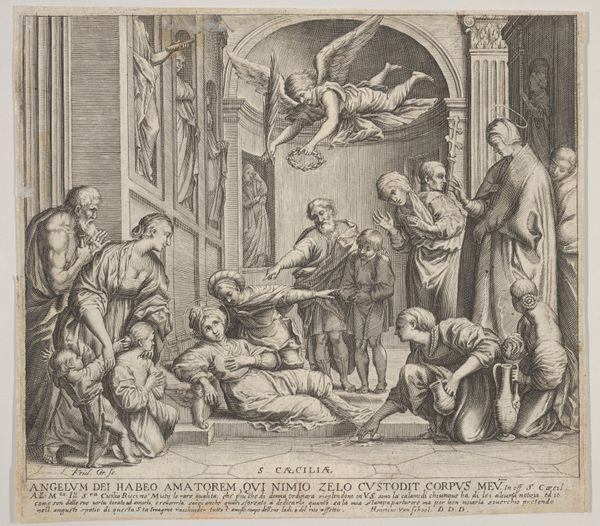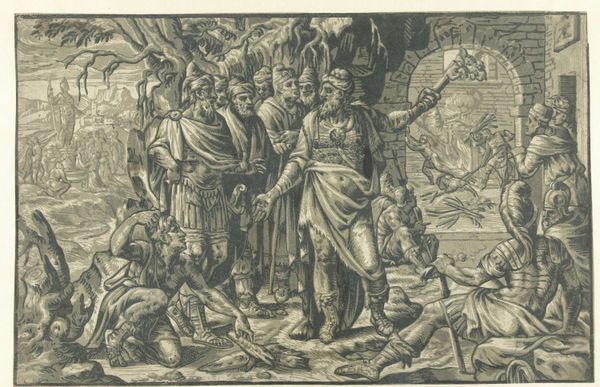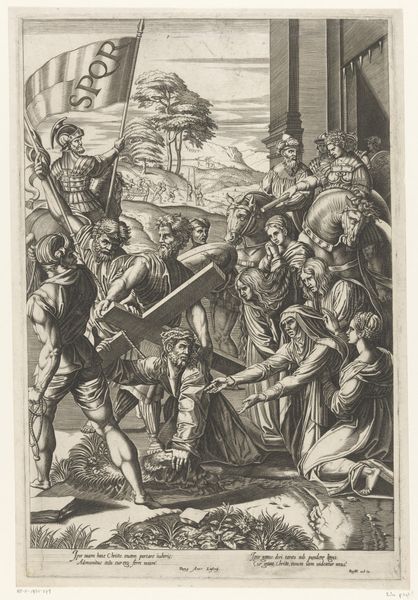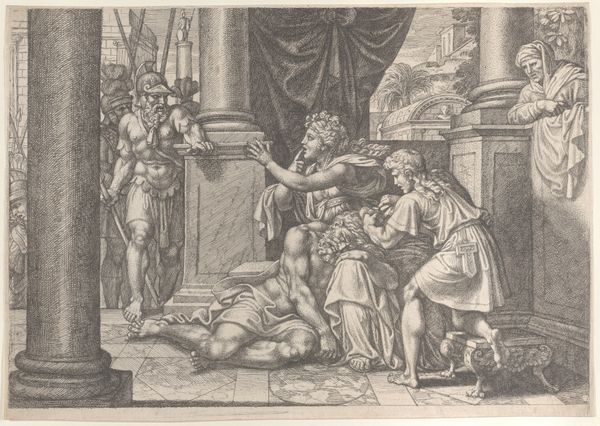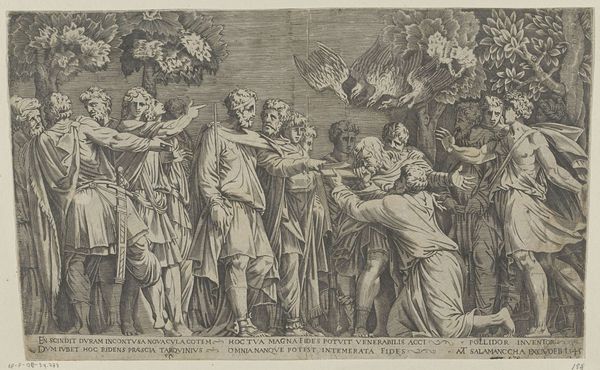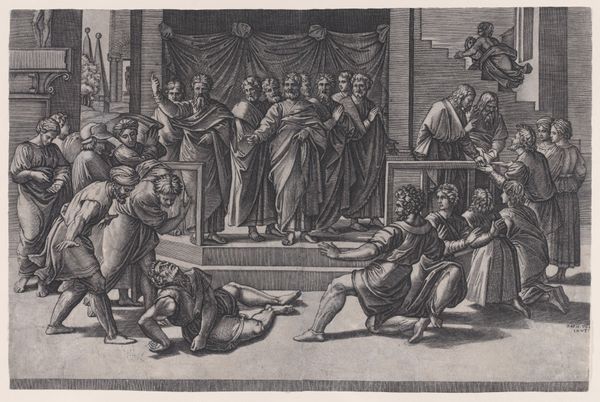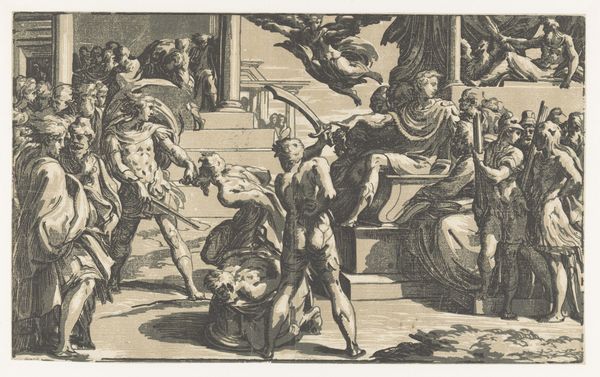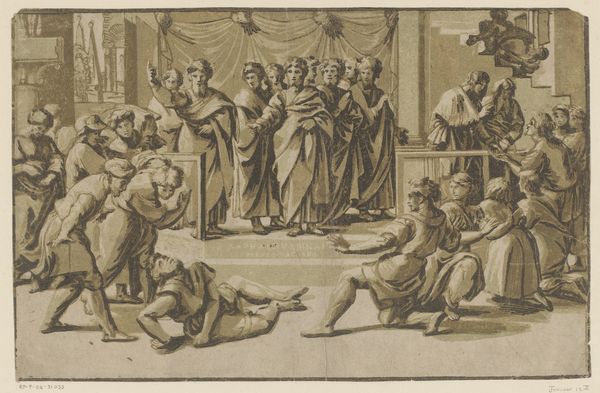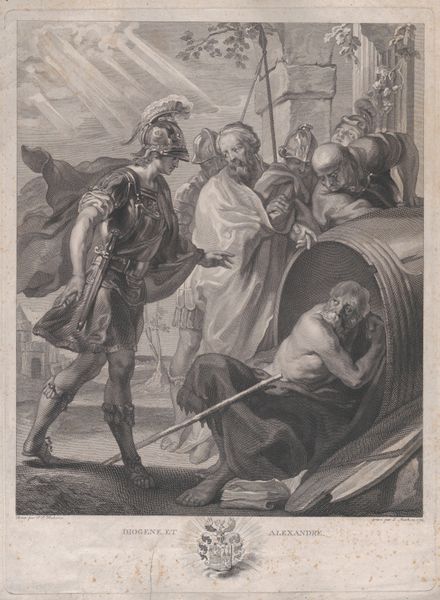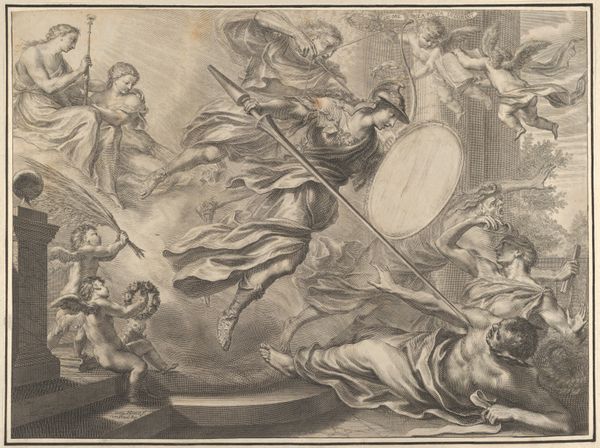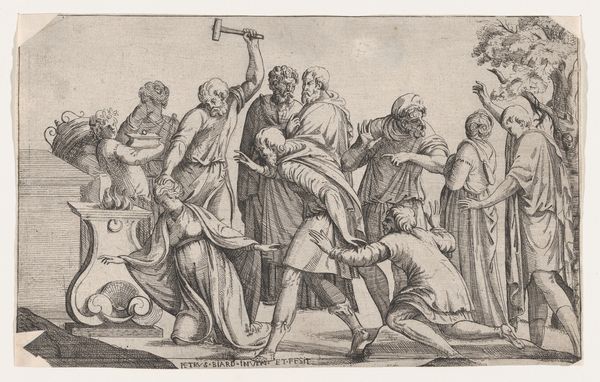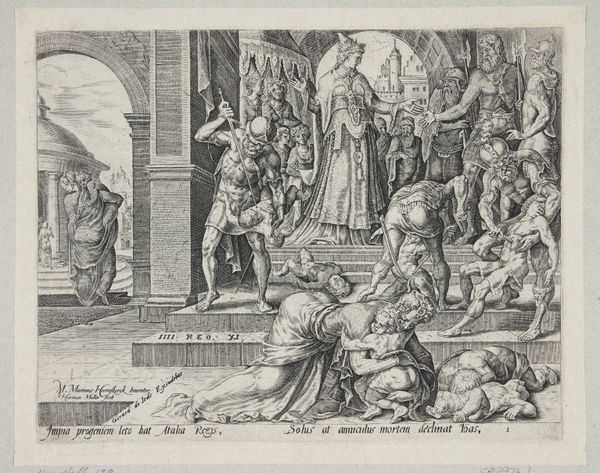
drawing, print
#
drawing
#
narrative-art
#
baroque
# print
#
figuration
#
history-painting
Dimensions: Sheet (Trimmed): 13 × 17 in. (33 × 43.2 cm)
Copyright: Public Domain
Editor: Here we have Giacinto Gimignani’s print, “The Death of Virginia,” dating sometime between 1630 and 1680. It’s a dramatic scene; what strikes me is the theatrical presentation of death and honor. What historical context should we consider when viewing this work? Curator: A crucial aspect is to situate this work within the socio-political landscape of the 17th century. How do you see this scene as participating in a discourse on virtue and authority? Think about who the artist was, and for whom would this subject matter have resonated. Editor: Well, given that it’s a history painting and Baroque in style, the figures seem strategically placed to maximize the drama, each showcasing an extreme emotional reaction. Curator: Exactly! The Baroque excelled at evoking intense emotions to inspire viewers. This print reproduces a key moment of Roman history, likely appealing to those keen to make statements on the civic responsibilities and patriarchal authority. Notice how the characters respond to the central crisis. Are there certain reactions that the artist particularly highlights? Editor: The central figure in armor seems to embody immediate, vengeful action, standing in stark contrast to the slumped Virginia in the foreground. It is a fascinating contrast between action and helplessness. Curator: Yes. Also, let’s think about where this would have been viewed and understood within the contemporary context of disseminating moral tales via print. How would you describe its political function? Editor: It’s like a morality play meant to reinforce the values and power structures of the time. It uses history to create a politically charged message that bolsters the power of authorities. Curator: Precisely. This wasn't just about illustrating a historical event; it was about leveraging that event to say something about justice, honor, and the role of leadership in Gimignani's own time. Editor: It’s amazing how much more comes out of it when you consider how its purpose transcends the subject. Thanks for opening my eyes.
Comments
No comments
Be the first to comment and join the conversation on the ultimate creative platform.

